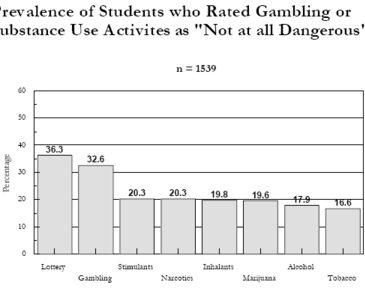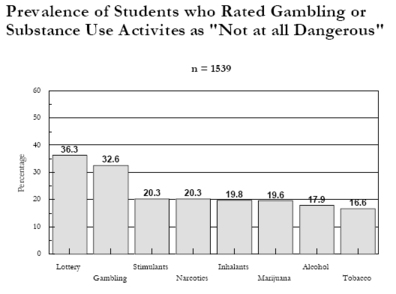Data from the 1995 Science Education Drug Abuse Partnership (SEDAP) needs assessment project reveal that 36.3% of a sample of 5th through 8th grade Massachusetts students consider playing the lottery to be “not at all dangerous” and 32.6% of this sample consider other gambling to be “not at all dangerous.” These students perceived both forms of gambling to be less dangerous than using each of six substances, including alcohol and tobacco. “Dangerousness” can be interpreted in many ways by middle school students. However, these data imply that a sizable proportion of students are unaware of potentially adverse consequences (e.g., psychological, scholastic, and economic) of gambling. Awareness of danger is one of many necessary components of an effective prevention program.
Source: Shaffer, H.J., Walsh, J.S., Howard, C.M., Hall, M.N., Wellington, C.A., & Vander Bilt, J. (1995). Science and substance abuse education: A needs assessment for curriculum design (SEDAP Technical Report #082595-300). Cambridge, MA: Harvard Medical School Division on Addictions.
This public education project is funded, in part, by the Massachusetts Department of Public Health.
This fax may be copied without permission. Please cite The WAGER as the source.
For more information contact the Massachusetts Council on Compulsive Gambling, 190 High Street, Suite 6, Boston, MA 02110.





